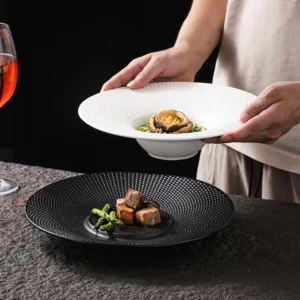

Nestled along the banks of the Han River, the ancient city of Chaozhou is renowned not only for its cuisine and historic charm but also as the “Porcelain Capital of China.” The evolution of its daily-use ceramics industry mirrors the advancement of Chinese ceramic civilization—a saga of craftsmanship and innovation, from the flickering kilns of the Tang Dynasty to its modern-day global dominance.
I. Tang to Qing Dynasty: The Birth of a Ceramic Civilization
Chaozhou’s ceramic legacy dates back to the Tang Dynasty, when local artisans mastered pottery techniques. By the Northern Song Dynasty, the Bijiashan Kiln propelled the industry to its first zenith. Archaeological findings suggest a single kiln could produce over a million pieces annually, with celadon-glazed bowls, plates, and cups dominating production. These wares traveled via the Han River to Southeast Asia and the Middle East, becoming staples of the Maritime Silk Road. During the Ming and Qing eras, Chaozhou’s kilns flourished with blue-and-white and underglaze-red porcelain, prized by royalty for their “jade-like translucency, paper-thin delicacy, and mirror-like brilliance.”
II. Material Innovation: From Local Clay to Cutting-Edge Formulations
The foundation of Chaozhou ceramics lies in the premium kaolin clay of the Han River Basin, renowned for its fine texture. In the 1980s, the introduction of bone china—blending clay with animal bone ash—resulted in 30% greater translucency and lighter weight. Recent breakthroughs include composite formulas infused with lithium spodumene and quartz, creating high-strength “reinforced porcelain” with 50% higher impact resistance. Eco-friendly glazes now reduce lead and cadmium leaching by 90%, exceeding stringent EU and U.S. standards. Today, Chaozhou’s material portfolio spans daily-use ware, artistic ceramics, and antibacterial functional porcelain, cementing its role as a global supply chain leader.
III. Technological Leap: From Handcrafted Artistry to Digital Precision
While traditional Chaozhou ceramics relied on 72 meticulous handcrafted steps, modern technology has revolutionized production. In the early 2000s, German automated roller-forming lines boosted daily output to 30,000 pieces per line. AI-controlled kilns have increased production yield from 70% to 98%. Digitalization drives further innovation: 3D printing slashes prototyping time for intricate designs by 80%, while VR modeling replaces costly plaster molds, cutting development expenses by 60%.
IV. Cultural Fusion: Functional Art with a Soul
Chaozhou ceramics captivate through cultural storytelling. “Pierced Flower Porcelain” (Tonghua Ci) showcases lace-like hollow carvings on eggshell-thin bodies, while Chaozhou Colorware blends traditional overglaze painting with modern pigments, earning acclaim as “Chinese paintings on porcelain.” Today, artisans integrate intangible heritage like Chaozhou embroidery and woodcarving motifs into ceramic designs, forging a “ceramics+” cultural ecosystem that elevates everyday objects into art.
Conclusion: Forging the Future with Ancient Flames
From Song Dynasty kilns to a billion-dollar industrial cluster, Chaozhou’s ceramic journey is a testament to relentless innovation. Breakthroughs in material science, smart manufacturing, and global branding are transforming it from a “world factory” into a “global innovation hub.” As Chaozhou’s artisans say: “A handful of clay fuels half a city’s spirit.” Here, the kiln fires forge not just porcelain, but an eternal pursuit of excellence—one that continues to shape the future of global ceramics.
Explore Chaozhou Ceramics: Discover how our 1,000-year heritage meets tomorrow’s technology. [Contact Us] to source premium, innovative ceramics tailored for your market.





